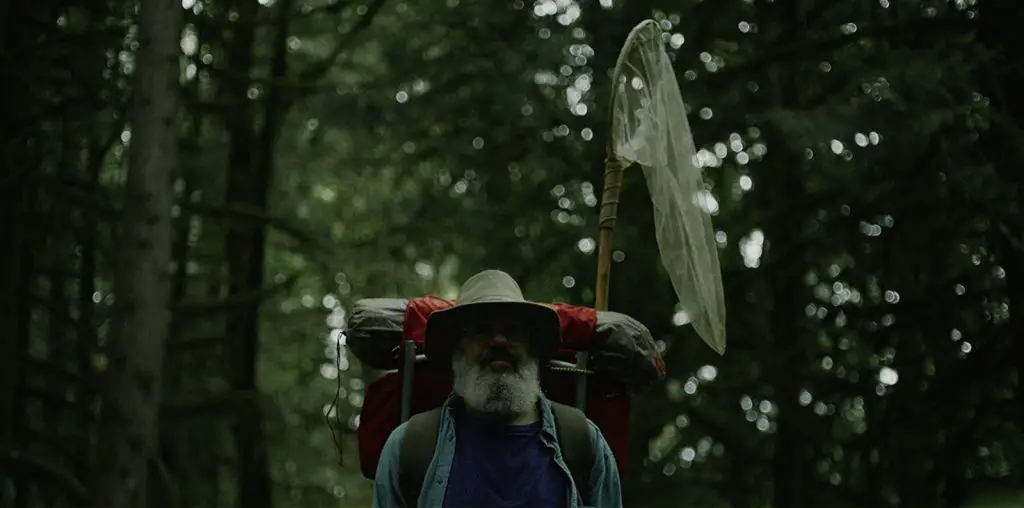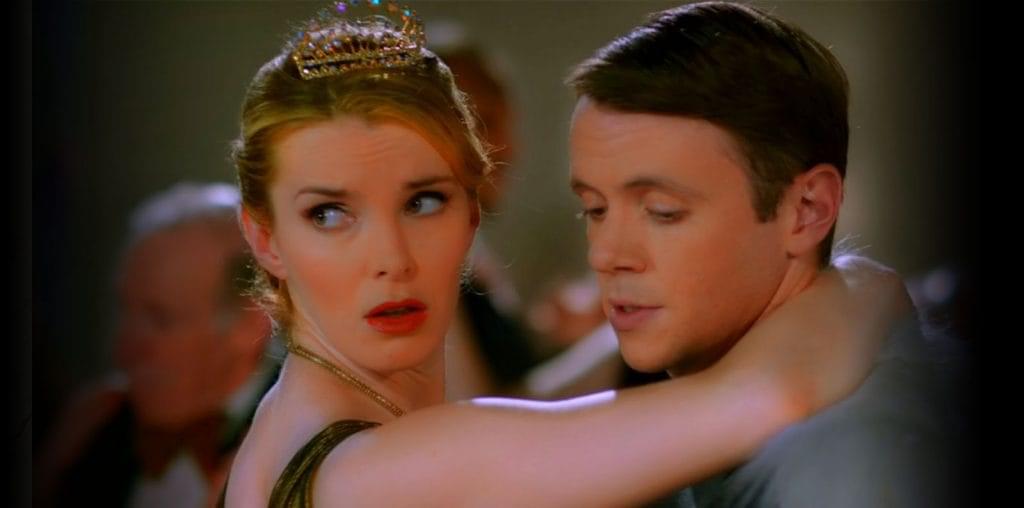
Welcome to Digital Dustbin, a new Film Threat-ening series that explores forgotten releases from DVD bargain bins and free digital cable menus. Now that the world is about to find out what Guy Ritchie’s “RocknRolla” is all about (thanks to the 2008 San Diego Comic-Con), as well as witness Madonna’s directorial debut (a British comedy, to boot), Film Threat re-examines her cinematic gem “Body of Evidence.”
Viewed on Comcast’s Free Digital Cable Menu, and available as a bargin DVD
Like Prince in her own time, and Elvis years earlier, 1980s pop queen Madonna rode the airwaves right to the big screen. Or rather, with the star’s funky visual style all over MTV at the time, the red carpet was dragged right to her feet.
Yet her rise didn’t obscure her humble entry into the movies. She had appeared in the underground film “A Certain Sacrifice,” made in 1979 but released in 1985 to capitalize on her rising fame, though her true debut came the same year with “Desperately Seeking Susan,” a New York drama about memory loss in which she was really a side player (albeit the title character). Since Madonna’s discomfort on screen was evident, the filmmakers were wise enough to keep her role minimal, while gladly exploiting her fame and style for profit. Thus, the film became a trendsetting phenomenon, not in filmmaking but in the worlds of fashion and pop. Fishnet stockings and other punk garb now flooded the mainstream, not to mention her hit “Get Into the Groove” ruling the airwaves.
In “Susan,” she had style, she had grace – but when it came time for her to deliver her lines, things got ugly. Thankfully, they came no more than one or two at a time, leaving enough space for actors Rosanna Arquette – as a suburban wife with memory loss, who thinks she’s Madonna’s Susan – and Aidan Quinn, who thinks that he has landed a free-loving material girl.
The film’s success promised more roles – and, alas, more screen time – for Madonna. The results, “Shanghai Surprise” and “Who’s That Girl?,” may be two of the most self-destructive releases of their era. The former was more about the behind-the-scenes romance between Madonna and Sean Penn, who’d soon enter infamy in his own right by mauling photo seekers. “Who’s That Girl?” was a misfiring attempt at slapstick comedy, in which Madonna finds what may be the most irritating falsetto ever as a wrongfully accused moll from Philly. It’s a role that Jennifer Tilly could have nailed, and in a way, did years later in Woody’s “Bullets Over Broadway.” (Though even the Woodman couldn’t resist the vogue when he casted Madonna in his 1992 tribute to German Expressionism, “Shadows and Fog.”) Griffin Dunne, who was the quirky returning corpse in “American Werewolf of London” and prisoner to the quirky Manhattan nightlife of Scorsese’s “After Hours,” blends into “Who’s that Girl?” as the guy trying to tame her. But he can’t fully submerge his own wincing at Madonna’s cackles, screams, and incessant, grating line delivery. As bad as she is, this movie itself should be listed as one of the most infamous ever, since it coldly exploits “Bringing Up Baby” and the classic screwball genre. “Girl’s” “Murray the Cougar” should enter the evidence as Exhibit A.
No doubt, these two films served well as fodder for the Madonna fanatics. But they inspired disgust in other moviegoers and resulted in her winning back-to-back Golden Raspberries for Worst Actress.
The stench of “Surprise” and “Girl” still lingered when a very different trendsetting film appeared – such a success that its title became a catchphrase. “Fatal Attraction” cooked down the noir template into the modern man’s nightmare, starring the femme fatale as the Reagan-era psycho-bitch, gone berserk via wanting her share (a “text” for postmodern feminists to break down, if there ever was one). Michael Douglas, who would become a mainstay victim in this new genre, played the upper-class suit who opens a certain Pandora’s Box (an increasingly psychotic Glenn Close).
The post-Spielberg/Lucas decade made the theater the home of kids and adults young in spirit. Viewers went “Back to the Future” and goofed around with “The Goonies,” but when producers saw a new payload in the adult demographic, they weren’t about to let it go. The high profile success of “Fatal Attraction” inspired a number of copycats in the theaters. But lightning didn’t strike again until 1992, when Sharon Stone spread her legs to imprint another title on the public consciousness.
“Basic Instinct’s” publicity stunt – the promise of a beaver shot – achieved far more profit than the money men behind the film could expect. Even those who never saw the movie talked about it, though plenty others went to make it a megahit. In the midst of all this, Madonna also “bared all” – and her deep-rooted bad taste – in her tour documentary, “Truth or Dare.” In the film, she went down on a bottle and ham-handedly staged other lurid acts; anyone unable to sense the artificiality behind the scenes would think it to be a scientific study on the ultimate bitch in heat. “Truth or Dare” proved the star was overconfident. It began with her unabashed slutty demeanor and comparing herself to Marilyn Monroe; in 1992, it was peaking in her seduction of her “Dick Tracy” co-star, Warren Beatty (is it possible that he actually appeared in that icky doc?); and today it has culminated in her status as a gay camp item. Though in the post-”Basic Instinct” milieu, with all her rampant sexuality, we can’t blame the Hollywood players for suggesting Madonna to play a seductress. But a fatale a la Kathleen Turner in “Body Heat”? Not quite.
Hollywood knew that gossip reporters would take note of Madonna going into close-up with Sharon Stone as inspiration. Viewers wanted to see the flesh beneath the slutty pop star’s fashions. And reports had suggested that she was now an actress, since she blended in (sort of) in the very mainstream “League of Their Own” and is on the books as having starred in the premiere stage production of David Mamet’s “Speed-the-Plow.” Much hype was promised for the 1993 Madonna vehicle, “Body of Evidence,” a title that even rings similar to its blockbuster predecessor from a year earlier.
The film would be directed by Uli Edel, just off his adaptation of Hubert Selby’s “Last Exit to Brooklyn” (which is, regretfully, best known for Jennifer Jason Leigh’s taking on a train of drunks fresh from a bar). Madonna would co-star with Willem Dafoe, who had more than proven himself as moral consciences in “Mississippi Burning” and “Platoon” but has become caught in roles of mainstream polarity, playing only the really good or really bad. (Today, even with “Shadow of the Vampire’s” engrossing Max Schreck on his resume, he’s probably best known as Sam Raimi’s “Green Goblin,” thus stuck in cut-out villainy.)
As her defense lawyer, Dafoe plays an innocent who gets snared by Madonna’s black widow. She’s been accused of fatally f*****g her previous lover, who had a fat wallet and a bad heart – for her, a repeated offense. Dafoe has certain look, that of a more honest Klaus Kinski, which helps his character transform from an innocent – though he has some heavy on-screen sex with a circa-”Short Cuts” Julianne Moore, and can identify chained nipple clips – into a sex-crazed masochist in Madonna’s grip. Before long, she’s dripping candle wax on – and licking champagne off – a chiseled Dafoe, whom she humps with his back to broken glass. In their defense, the affair would never stand a chance in this movie’s obsessively conservative world, in which gays and even acupuncture serve as bizarre threats.
All S&M aside, it’s clear that the real star here is Madonna’s lovely natural rack, often bared and delivering more devilish thrills than the rest of the content on screen. Madonna’s fair-skinned presence adds some seduction, and this B-grade atmosphere welcomes her stilted line reading moreso than did her other films. In closeup, the low-key lighting fixes on her eyes and keeps the rest of her face in shadow. But there’s no mistake: it’s Madonna, looking very content that she’s made it with little singing talent and much less in acting.
The film soon settles into a volleyball match of court scenes and sex scenes. With this creaky structure, the noir style to which this films aspires falls right out of Edel’s hands. Courtroom drama often veers crime films into moralizing, and things needed to stay dirty here to achieve the intended trashy pleasures. The revelations in court – which include an appearance by Frank Langella as Madonna’s ex-lover that I bet he wishes were forgotten – dilute the dark seduction, and Acts Two and Three are all about Madonna’s melons.
Should “Body” have worked (a far cry, I admit), Edel could have been on his way toward developing a personal style. He found success dramatizing the pulpy thrills of Selby in his prior film, and an erotic neo-noir as a follow-up would have suggested the makings of another Adrian Lyne, who could make the stuff of late night cable serviceable for theaters. But “Body” didn’t recover even half its budget, a far cry from the successes of “Fatal Attraction” and “Basic Instinct.” The sour taste that “Body” left for Edel is evident in his next, very different big screen feature: the children’s fantasy “The Little Vampire.”
As for Madonna, the acting stayed tone-deaf. In 1996, she did enough singing in “Evita” for her performance to fall under the radar. Then, Rupert Everett tried his best to compensate for her awkward performance in “The Next Best Thing” (directed by, yes, that Schlesinger, in what turned out to be his swansong). Hubby (soon to be ex?) Guy Ritchie likely tried the same behind the camera as he (mis)directed his remake of “Swept Away.” While Ritchie has likely inspired her to take the director’s chair, her infamous acting legacy is now epitomized off screen, in what is the worst (and longest) performance of her career: a faux British accent.

